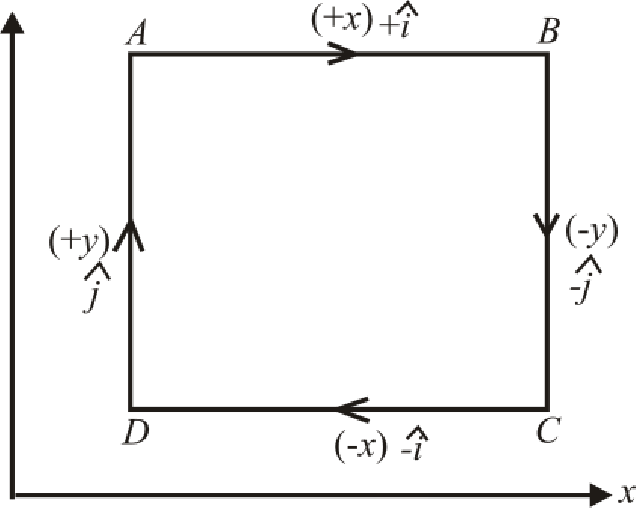
Concept explainers
The contribution to the circulation integral due to each segment of the loop, and the net current through the loop that must be present.
Answer to Problem 17PQ
The contribution of side 1 is
Explanation of Solution
Draw the figure for the system as shown below:

Refer to the above figure, consider a square loop
Write the general expression for Ampere’s Circuital Law for the given above figure as.
Here,
Substitute
Substitute
Substitute
Substitute
Conclusion:
Substitute
Further,simplify the above equation as.
Thus, contribution of side
Substitute
Further,simplify the above equation as.
Thus, contribution of side
Substitute
Further,simplify the above equation as.
Thus, the contribution of side
Substitute
Further,simplify the above equation as.
Thus, the contribution of side
Thus, the contribution of side 1 is
Want to see more full solutions like this?
Chapter 31 Solutions
Physics for Scientists and Engineers: Foundations and Connections
 Principles of Physics: A Calculus-Based TextPhysicsISBN:9781133104261Author:Raymond A. Serway, John W. JewettPublisher:Cengage Learning
Principles of Physics: A Calculus-Based TextPhysicsISBN:9781133104261Author:Raymond A. Serway, John W. JewettPublisher:Cengage Learning
 Physics for Scientists and Engineers: Foundations...PhysicsISBN:9781133939146Author:Katz, Debora M.Publisher:Cengage Learning
Physics for Scientists and Engineers: Foundations...PhysicsISBN:9781133939146Author:Katz, Debora M.Publisher:Cengage Learning Physics for Scientists and EngineersPhysicsISBN:9781337553278Author:Raymond A. Serway, John W. JewettPublisher:Cengage Learning
Physics for Scientists and EngineersPhysicsISBN:9781337553278Author:Raymond A. Serway, John W. JewettPublisher:Cengage Learning Physics for Scientists and Engineers with Modern ...PhysicsISBN:9781337553292Author:Raymond A. Serway, John W. JewettPublisher:Cengage Learning
Physics for Scientists and Engineers with Modern ...PhysicsISBN:9781337553292Author:Raymond A. Serway, John W. JewettPublisher:Cengage Learning College PhysicsPhysicsISBN:9781305952300Author:Raymond A. Serway, Chris VuillePublisher:Cengage Learning
College PhysicsPhysicsISBN:9781305952300Author:Raymond A. Serway, Chris VuillePublisher:Cengage Learning





